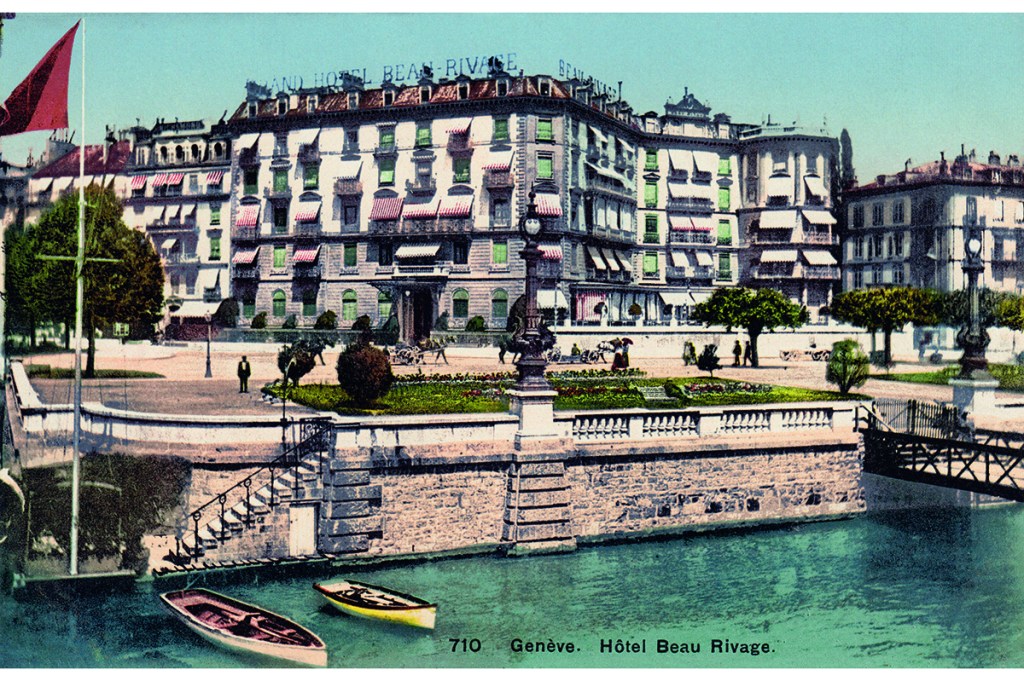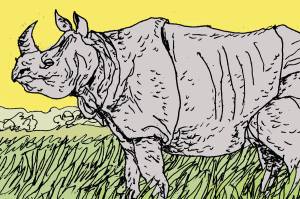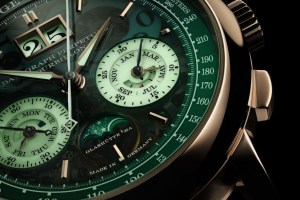From my plush bedroom in the Beau Rivage, Geneva’s most historic grand hotel, I look down on the lakeside promenade where one of the most remarkable women of the nineteenth century met her dark, dramatic end. On September 10, 1898, Empress Elisabeth of Austria (commonly known as Sisi) was stabbed in the chest by an Italian anarchist as she was about to board a paddle steamer to Montreux. She was carried back into the Beau Rivage and up to the suite where she’d spent the previous night. Within half an hour she was dead.
Today, the hotel’s palatial Sisi Suite still looks much as she would have found it. But there are mementoes of her brief, fateful stay all around this antique hotel: a plaque marks the spot where she was murdered, and a statue was erected on the waterfront to commemorate the centenary of her murder. And the long shadow of her strange life stretches far beyond Lake Geneva. All across what used to be the Habsburg Empire (that unruly hotch-potch of nationalities that straddled Central Europe from the fifteenth century until the end of World War One), people’s eyes still sparkle at the mere mention of her name.
Sisi was born in Munich in 1837. A minor member of the Bavarian royal family, she grew up playing in the woods and meadows around Possenhofen, a handsome but homely Schloss beside the Starnbergersee, one of Bavaria’s largest, loveliest lakes. She might have spent a happy, inconsequential adulthood there too, had it not been for her ambitious mother, Ludovika. Ludovika had been born a princess and she wanted her daughters to marry monarchs, not mere dukes. When her eldest daughter Helene turned eighteen, Ludovika arranged a rendezvous with the Continent’s most eligible bachelor, the twenty-three-year-old Franz Joseph, emperor of Austria. He wasn’t smitten by Helene, but by her fifteen-year-old sister Sisi. They were married when she was just sixteen.
Sisi was lively, intelligent and beautiful — the ideal royal bride. Although she was now one of the most famous women in the Western world, with a lifestyle that every woman envied, she grew to detest the role that had been thrust upon her. “Marriage is a ridiculous institution,” she reflected. “Sold as a child of fifteen, taking an oath which I did not understand and could never undo.” She bore her husband four children, but she refused to be just a broodmare. She loathed the duties and restrictions of being an empress, and though she remained married (there was no way she could divorce a Catholic emperor), she became increasingly independent, traveling abroad for months on end incognito and without her husband — a scandal in those days.
Was Sisi a proto-feminist or a spoiled rich girl? In truth, she was a bit of both. She was often uncaring and sometimes cruel to those closest to her, yet she lavished money and attention on needy strangers — the sick, the injured, the insane. She craved adoration and attracted countless suitors (virtually every man she met fell hopelessly in love with her) but she had scant interest in romance. Arguably, her closest relationship was with her cousin, “Mad” King Ludwig II of Bavaria, who was almost certainly homosexual. “Life will be worthless to me when I am no longer desirable,” she said, but she had little in common with her husband, her marriage was passionless and she reserved her fiercest affections for her youngest daughter.
Sisi was the first royal celebrity of the modern age. Her life foreshadowed Princess Diana’s: her beauty and lonely marriage, her selfishness and compassion, her tortured relationship with royalty and fame. Like Diana, Sisi was painfully shy yet forthright in espousing opinions that other members of her family dared not air. Like Diana, she was an object of obsessive interest, hounded by the press. She avoided the cameras when she could but she still became an international icon. Like Diana, she suffered from eating disorders: she preserved her petite figure and 18-inch waist through a near-starvation diet. Sisi’s later years provide a glimpse into how Diana might have spent her forties and fifties, if she had lived to see them: wandering aimlessly around Europe, searching for solitude and peace.
I’ve been wandering around Europe these last thirty years as a jobbing journalist. The Habsburg Empire has been my lifelong fascination, from Prague to Budapest, from Belgrade to Trieste. I’ve conducted my ad hoc odyssey in a lot less style than Sisi did — not for her the banal tedium of budget flights and cheap hotels — but in a way my journey has been somewhat similar, a forlorn attempt to shirk the responsibilities of adulthood: home, marriage, family. It feels fitting that everywhere I go, I come across melancholy reminders of Sisi, from the lifeless statues in the public parks to the picture postcards in the souvenir shops. Her pretty face stares back at me, its coy smile mocking my wanderlust. Sisi understood the futility of travel better than anyone. Wherever you go to escape your past, the first person you encounter there is yourself.
You could spend a lifetime retracing the footsteps of this insatiable traveler, but the two places where her spirit lives on are Vienna, which she hated, and the Starnbergersee, which she loved. A century since their vast polyglot empire was reduced to a small Germanic rump, the Habsburg rulers’ ghosts still haunt the Austrian capital. For the visitor it’s thrilling, but you can see why Sisi found it oppressive. The Hofburg, the imperial palace, feels cold and lonely, for all its splendor. (“If I remained imprisoned in the Hofburg, I would be an old woman in a year.”) Schönbrunn, the Habsburgs’ summer palace, is a lot lighter but must have been stifling for a free spirit like Sisi. No wonder she spent her summers back on the Starnbergersee, where she’d spent her childhood, anonymous and free.
I was thrilled to find that the Schloss at Possenhofen was still there. It must have been an idyllic place to grow up: smart enough, but cozy, and far more intimate than the Hofburg. It’s been converted into private apartments, and you’re not allowed to wander around, but you can drive up to the gates and the view across the lake is still splendid. Sisi spent twenty-four summers on the lake in adulthood, but she didn’t stay in Possenhofen. Instead, she rented out an entire hotel in Feldafing, a small town a few miles away. The hotel is still there too, named the Hotel Kaiserin Elisabeth in her honor. The décor has hardly changed, and a somber fin-de-siè-cle ambience pervades every corner of the building like the lingering perfume of a long-departed guest.
A short walk away, through fields and forest, is the Starnbergersee and the ferry crossing to Rosen Insel (Rose Island). This bucolic hideaway is like the setting for a Teutonic fairytale, so it’s no surprise to find it was created by Sisi’s cousin, “Mad” King Ludwig, who is famed for his fantastical castles (most notably Neuschwanstein, the inspiration for Disneyland). Sisi met Lud- wig here several times. She called him her eagle. He called her his seagull. The last time she came here, she wrote a poem for him and left it here, knowing he’d only find it and read it long after she’d departed. Across the water is Schloss Berg, where Ludwig was subsequently imprisoned by his ministers. They decided he was insane, no longer fit to rule. Allowed out for a short walk with his doctor, he drowned in the lake, in a few feet of water. The official verdict was misadventure, but many Bavarians still believe he was murdered.
Sisi’s life was beset by tragedy. Her eldest daughter died in infancy. After her only son killed himself, she dressed all in black and hid her face behind a fan. She was terrified of growing old, yet she was indifferent to danger. “There comes a time in everyone’s life when the inner spirit dies,” she said, and in Geneva in 1898 that time had surely come. She’d only just turned sixty, but she sounded tired of living. “I would like to die alone, far from my loved ones, and for death to take me unawares,” she declared, and outside the Beau Rivage her wish was granted. Her death presaged the destruction of the Habsburg Empire. A hundred years on, Europe is still reeling from the consequences: World War One, World War Two, the Holocaust, the Cold War.
My morbid pilgrimage ended at Possenhofen train station. Today, this is just another station on the commuter line to Munich, but the building dates back to 1865 and the ornate waiting room has been converted into a Sisi museum. Intricate curios in glass cabinets tell the story of her wonderful, awful life. It’s seductive and slightly sinister, more like a mausoleum than a museum: an array of sacred artefacts, the holy relics of a religious cult.
Back in Starnberg, waiting for my train to Munich, I checked my watch and pictured the evening ferry from Montreux docking at the jetty by the Beau Rivage. How odd that she started her life’s journey here and ended it there in so similar a place. It was already dark, and the lake looked big and black in the dim moonlight. I thought of something Sisi said: “My life is of no more importance than a poppy in the field or a wave beating against the shore.” Suddenly, I realized my infatuation with her was over. There were people back home who needed me: my wife, my son, my daughter. There was too much death in this sad story: murder, madness, suicide. It was time to focus on the living. It was time to forget about Sisi and head for home.
William Cook was awarded the Johann Strauss Gold Medal for his reporting from Vienna. This article was originally published in The Spectator’s January 2022 World edition.


















